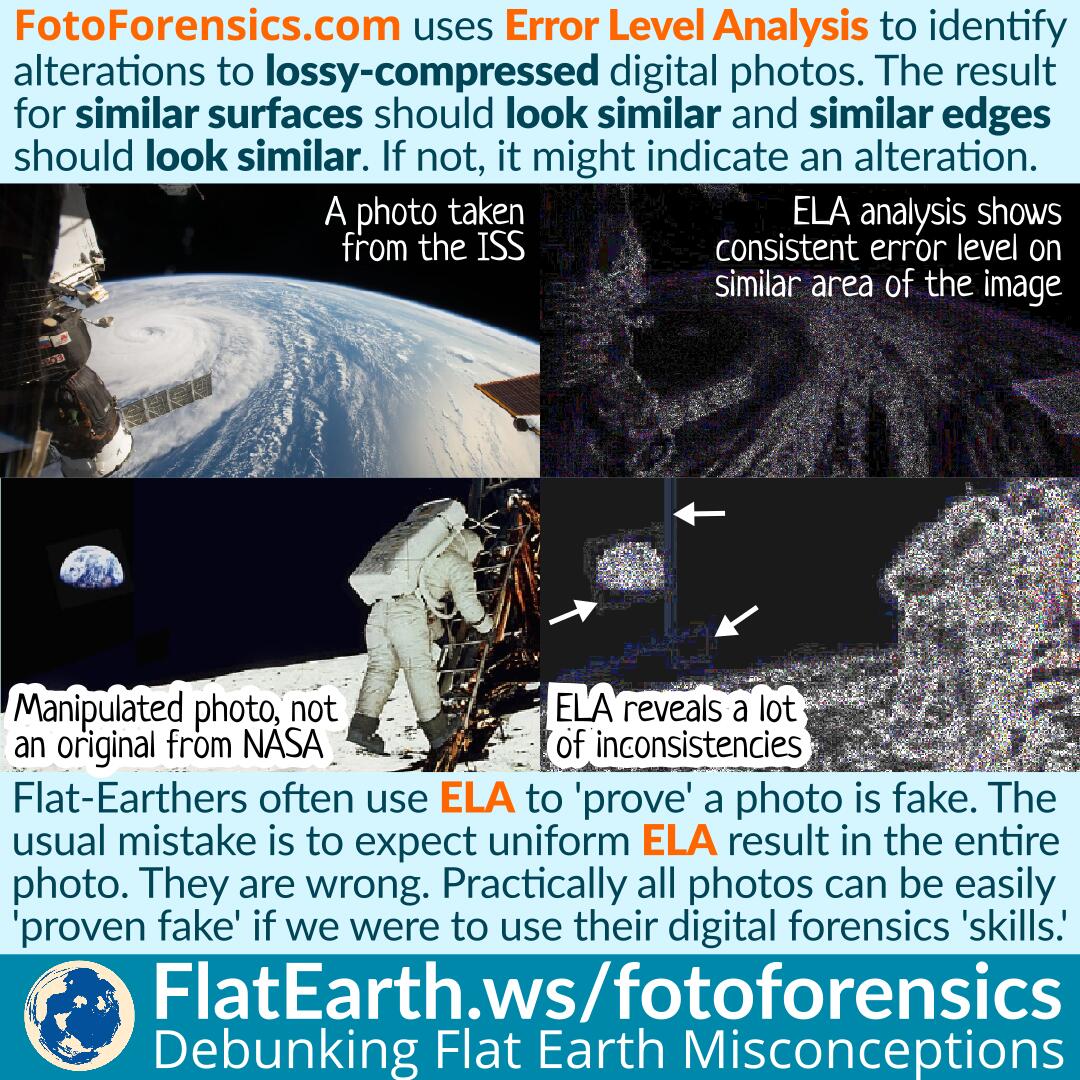An online digital photo forensics tool like FotoForensics.com uses Error Level Analysis (ELA) to discover the error level differences on a photograph that was saved using a lossy compression algorithm, like JPEG. ELA algorithm enables us to determine if a photo was digitally modified. Similar surfaces and similar edges should appear similar under ELA. If not, it might indicate a digital manipulation.
Flat-Earthers like to use ELA to ‘prove’ a photo has been tampered with. It occurs because they do not understand how ELA works. Most of them appear to assume if the picture is an original, it would show a uniform ELA. Using such a digital forensic ‘skill’, we can actually ‘prove’ all digital photos as fake.
When a picture is saved in the JPEG format, it will lose some data. ELA tries to detect the errors due to the loss of data. If a JPEG image is pasted to another JPEG image, then the result will have a different level of errors. In many cases, ELA can reveal such type of manipulation.
In an ELA result, similar edges should have similar brightness, similar textures should have similar coloring, and flat surfaces should have about the same coloring. If not, it might indicate digital manipulation.
ELA is simply a tool; it does not tell us if a photo was the result of manipulation. To determine if a photo has been manipulated, we need to have the knowledge on how to use the tool. ELA will only detect the error level if a picture is saved using the JPEG format. It will not tell us anything if the entire process did not involve the saving to the JPEG format.
Digital image forensics is a complex topic. It is not as easy as purported by some flat-Earthers.
References
- Tutorial: Error Level Analysis – FotoForensics.com
- Error Level Analysis – Wikipedia
- Frequently Asked Questions about Analysis – FotoForensics.com


